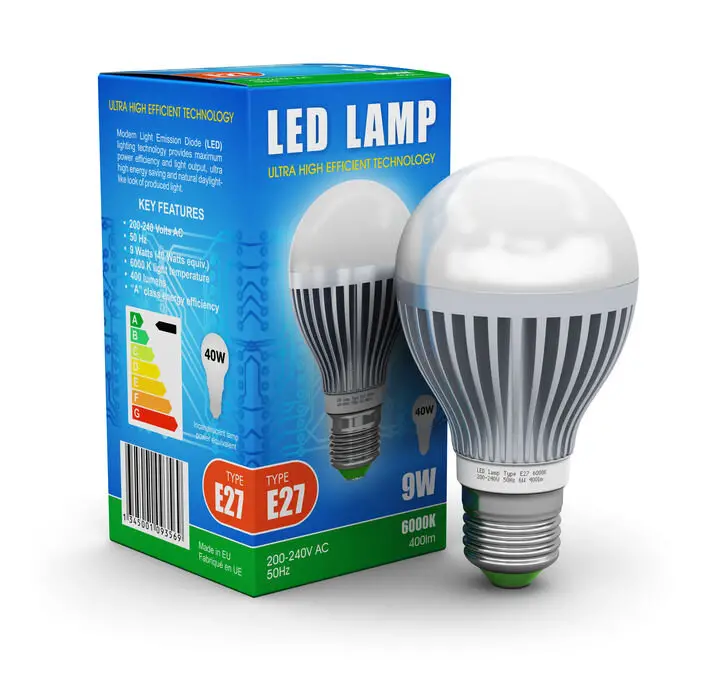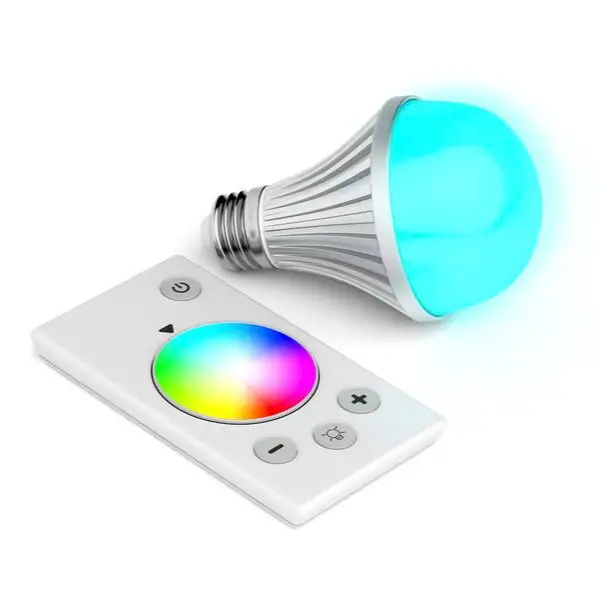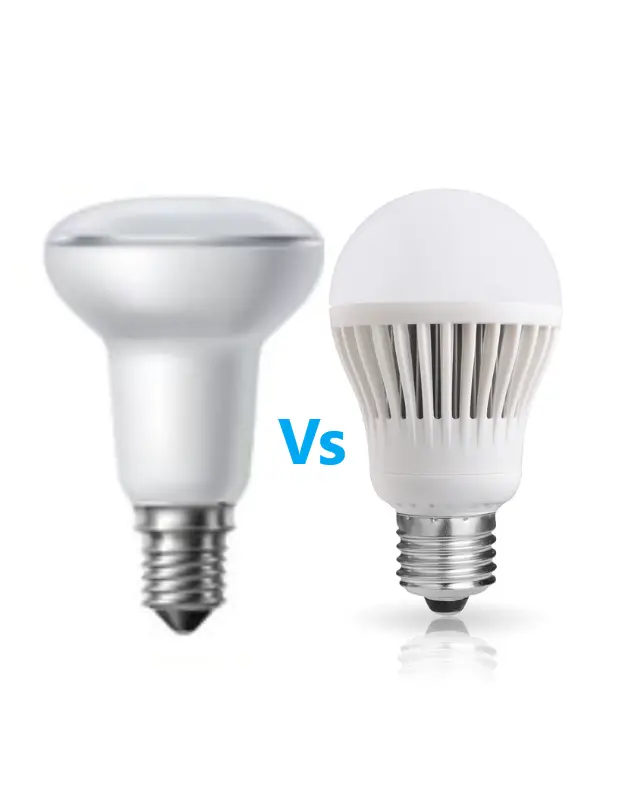Energy Efficient Lighting Solutions For Offices
In a world that grows as rapidly as ours does, it is becoming increasingly important that we start to optimize the energy we use as a society. One improvement that can be made is within office spaces, more specifically lighting.
The lighting in offices accounts for anywhere between 15-50% of the total energy consumption depending on how efficient the already existing lighting is.
Seeing as this is a rather large part of the building’s energy consumption it becomes apparent that this is an aspect that should be looked at for possible improvements. Here we will go over different ways and principles to achieve a system of energy-efficient lighting for offices.

Contents
Defining Energy Efficiency For Offices
Before going into what exact measures to take in order to create a more energy-efficient office, we first need to identify what qualifies as energy-efficient in terms of lighting in the first place.
BREEAM
One way to define energy-efficient lighting is through the requirements that different building assessment methods use to determine the sustainability of a building. The most prominent example of this is BREEAM.
BREEAM is a method in which a 3rd party will evaluate the sustainability of a building and give it a score from 1-100%.
BREEAM factors in a whole lot more than simply just the lighting. It factors in other sustainability factors such as well-being, materials used and even access to public transport. Go here to learn more about how the BREEAM rating works.
However, we will only be looking at the parts that cover the building’s lighting. The most important thing BREEAM addresses that cover office lighting is the fact that light sources must have a luminous efficacy greater than 45 lumens per watt to be considered efficient.
The light output from any given light source is measured through a lumen which in short is a quantifiable way to measure how much light a bulb or other light source gives off.
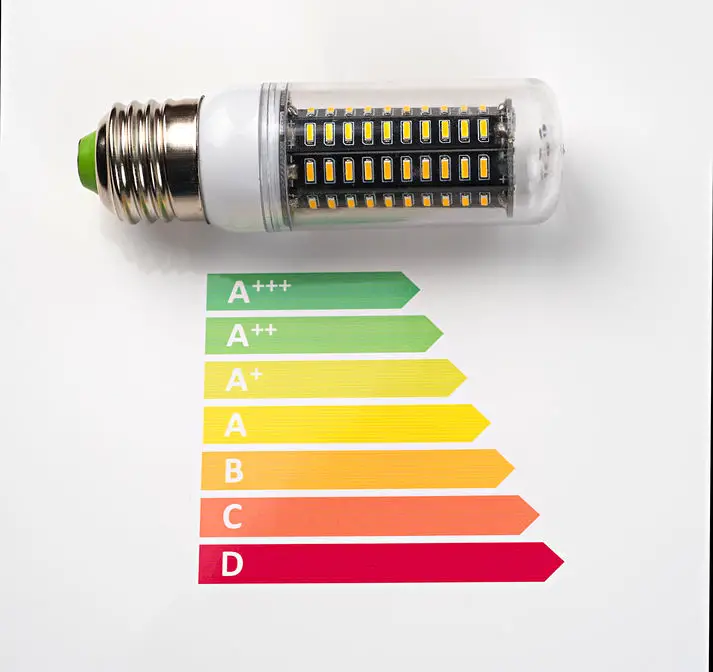
This number is then divided by the amount of energy (Watts) it uses. This way we get a number that describes how much quantifiable light a light source produces per unit of energy used. This is what is known as lumen per watt or lm/W and is often referred to as “luminous efficacy”.
To put the number 45 lm/W into perspective the old incandescent bulb has an efficiency of around 9-12 lm/W whereas more modern light sources like LED have an efficiency of anywhere between 80 lm/W to 200 lm/W.
LENI Number
One guideline we can use for planning efficient lighting for an office is how many W/m² we should aim to have. W/m² (Watt/Meter squared) is a measurement used within lighting to describe how much energy (W) is used for each square meter of floor surface area.
According to European Standard EN 15193-1, office spaces are required to have at most 12 W/m² but should aim for 10 W/m² and lower when purely looking at lighting.
The W/m² measurement usually includes energy used for heating and ventilation aswell, making it important to specify that this purely regards lighting.
Using these numbers we can calculate the room’s LENI number. LENI stands for Lighting Energy Numeric Indicator and is a measurement of how much energy a room/building uses per square meter annually.
This number also takes a few other factors into account, such as daylight savings and the number of hours the area is used per year. These factors are all specified within LENI calculation tools and all derive from the testing of real facilities in order to get accurate values.
Using the specified numbers within the LENI calculation model it is possible to calculate the kWh/m²/a (KiloWatt hours/Square meter/Annual usage) of the room. The kWh/m²/a number is synonymous with the LENI number.
Efficient Light Sources To Use For Office Environments
The first thing we should look at when planning for efficient office lighting is what actual light sources to use.
As we have concluded they need to be more efficient than 45 lm/W and should ideally be durable enough to last for a long time to ensure minimal upkeep expenses.
LED (Light Emitting Diode)
The most obvious choice for this is LED-based lighting. This is because LEDs:
- Have a luminous efficiency of 80-200 lm/W.
- Have a long lifetime of 50 000-100 000h.
- Use very little material for production.
- Have very little heat emission.
- Have a rather direct light spread.
LEDs can also be very versatile because they can come in a lot of different shapes and forms. They can be transformed into versions such as tubes, bulbs, strips and panels.
The main drawback of the LED currently is the fact that it makes use of phosphor to create more even white light.
The problem with this is that our planet is running the risk of being in a shortage of this resource due to a large quantity of it being used within agriculture and food production but also partly because of its use in LEDs.
As for lighting, we are currently figuring out the best possible ways to recycle and reuse the phosphor from old used-up LEDs. This would involve some sort of process of separating the still functional phosphor from the old broken parts of the LED bulb.
Warm Vs Cool LEDs
When choosing LEDs you have a choice to make when it comes to the colour temperature of the light. This choice is between warm or cool LEDs.
In most office applications it is generally advised to go for the cool variant. This is because humans are biologically programmed to be more active and efficient in cooler lighting whereas warm lighting makes us feel comfortable and tired.
For these reasons, it is wise to use cool LEDs in places where work is meant to take place.
In terms of pure energy efficiency cool LEDs are also slightly better than their warm counterpart. This is due to how warm LEDs are made.
All LEDs are naturally cool due to how they are constructed. Unfiltered LED light tends to be very blue, verging on the ultraviolet spectrum in terms of visible light.
The LED light is therefore covered in a layer of phosphor to make the light emissions more even but also a bit warmer. This is where warm and cool LEDs differ because the cool LEDs only have a slight layer of phosphor covering them whereas the warm ones have a thicker one.
This causes more light from the warm LED to get blocked out by the thicker layer of phosphor, which means that the warm LED will produce less light than a cool one will if it uses the same amount of electrical energy.
Fibre Optic Lighting
When speaking about light sources to use it is usually the LEDs that get mentioned. However, with even newer and more modern technology there are ways to utilize natural daylight as the actual light source for luminaires.
This way is by making use of fibre optics to harvest the natural light.
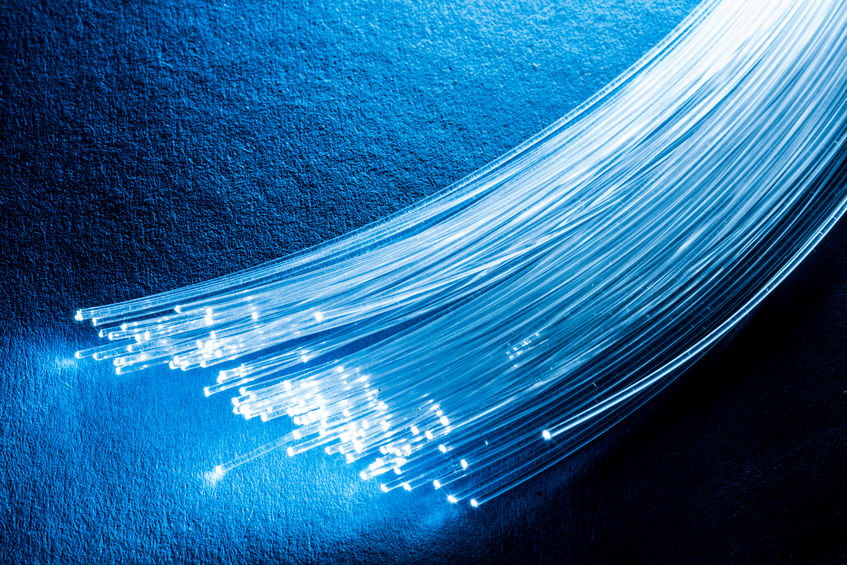
One way this is done is by Swedish lighting system company Parans who have developed a green and sustainable way to harvest sunlight and then transport it via fibre optics to different rooms in a building.
This is done by having a solar panel which instead of transforming the sunlight into energy simply captures the sunlight and transports it away into different areas of the building via fibre optic cables.
These cables then connect up to Parans’ own luminaires which then send out the sunlight to the room seamlessly. These luminaires are also backed up with their own LEDs, meaning that even at night time these fixtures will still be functional.
This concept is still rather new and therefore hasn’t been tested very extensively yet but it is suspected that it is possible to save over 40-50% of the energy used for lighting simply by using this lighting principle.
It also works well in already existing buildings/lighting installations because it doesn’t require big changes to the building’s constructions to be installed.
All that is really needed for this system to work is somewhere for the daylight panel to reside and a few tubes for the fibre optic cables to go through.
As an added bonus to this, they also create a much healthier lighting environment since humans naturally feel better in natural sunlight rather than the artificial lighting in most of today’s buildings.
Efficient Light Planning For Offices
In order to achieve an energy-efficient lighting system it is vitally important to make efficient light planning. This is in reference to what fixtures/luminaires to use, where to place them and how much light they should output.
Example 1
One option that is rather commonly used within office spaces is to fill the ceiling with light panels.
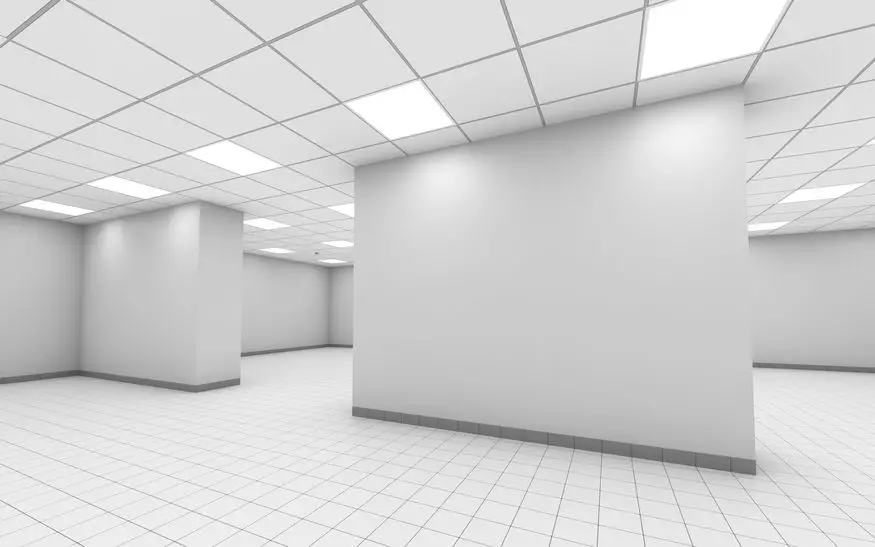
This option is best applicable in an office with a dropped/tiled ceiling, which is most commonly found in countries throughout Europe and the US.
Pros:
- The panels are very energy efficient.
- The lighting will be even throughout the entire area.
- It is easy to make changes to the system.
- They are not very prone to give off much glare.
- Easy maintenance
These plates are an ideal choice for those looking for pure efficiency. Their construction is based on LED technology and they generally speaking have a luminous efficiency of well over 100 lm/W.
It will also cause the lighting to generally speaking be of a good level but also very evenly spread. Given the grid pattern of the plates, they give off a very evenly light.
They also make it easy to make changes in the system since they can be added, removed and rearranged without too big of a hassle.
In addition to this, they are good for minimizing the risk of glare. This is due to the fact that there is no directly visible bright light source but that there instead is an even layer of LEDs with a lens on it.
The maintenance is also rather simple since there isn’t much that needs to be done in terms of upkeep. For the most part, they only require cleaning to maintain their luminous output since their lifetime is around 50 000-100 000h and tend to get a bit dirty within timeframes that large.
Cons:
- They create significant contrasts in the ceiling.
- Could be subject to flicker.
- Can create an unhealthy lighting environment.
- The light can be perceived as boring.
In relation to the plates creating an even light, it can also be perceived as a bit dull. This is simply due to the fact that when the light is this even it creates little to no contrasts in the room, which can cause it to feel uninteresting.
While the actual fixtures themselves are good at covering the light source itself with some sort of lens, they create a big contrast of light and dark in the ceiling.
This by itself could give off a blinding effect since it allows you to look at something very bright and very dark in the same eye frame.
Another problem that is possible to run into with these types of lights is the fact that they might flicker. This is a problem with a lot of LED-based fixtures, especially during the dimming of the LEDs.
Having lighting that noticeably flickers can have several health-related effects on the people working there, such as constant headaches, migraines and even seizures in the worst case.
This is quite clearly something that should never happen at a workplace, meaning that the lighting option used is something that needs to be taken into account more in order to create a healthy light environment.
Example 2
This next example builds upon the principle of having some sort of common light that gives a “base layer“ of light to the entire floor but also gives the option for an individual light.
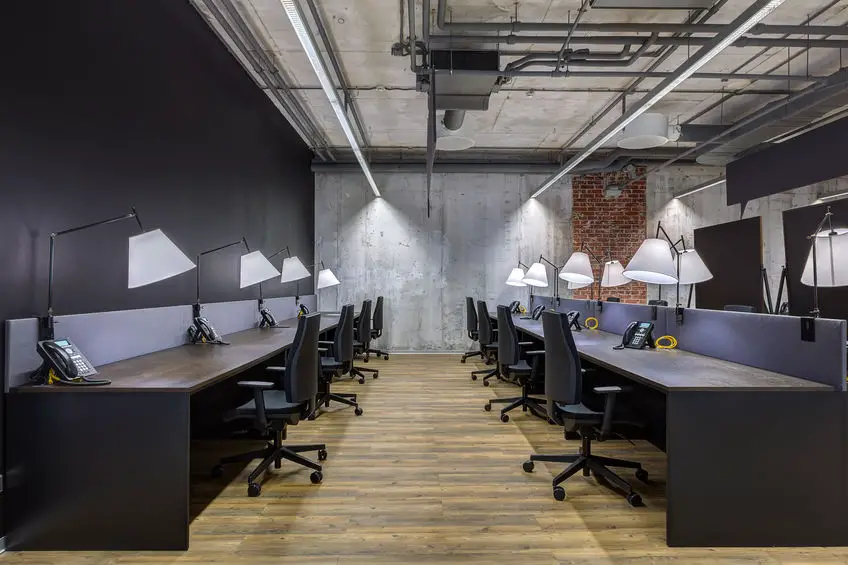
This option allows for more personalized lighting since you are able to dim your designated light in any way that you personally desire without disturbing anybody else’s working area.
This can be done in several different ways since you can switch out the ceiling lights and the desk lights to any light fixtures that fit the concept.
This could be done in the way the image above shows or for example downlights as the common lights with pendant luminaires like this one for each individual working space.
Pros:
- Allows for personal customization
- Increases personal comfort
- Allows for more precise work lighting
- Creates an interesting lighting environment
One huge improvement with a design like this is that it allows for personal customization within your own working space. This mostly refers to being able to control your own lighting to your own preference since different people tend to want different levels of light.
This also creates a more dynamic lighting environment since there are simply a few more things going on than in the previous example, causing more contrasts and visual elements that are more interesting to look at.
Cons:
- Creates lighting contrasts in the ceiling
- Increased running cost
There are not an awful amount of cons with a system like this, however, one that could become an issue is that it also creates contrasts in the ceiling, arguably more extreme ones than in example 1.
This is because the light points in the ceiling in a design like this are more concentrated in smaller areas than the plates used in example 1. This causes the area of the actual light to appear extremely bright whereas the rest will look much darker in contrast.
This system will also possibly have a higher running cost than that of the previous example. This is simply because there are more light sources used, meaning that as a whole they will use more energy.
There are however ways to get around this point in particular, for example having the common lighting be a tiny bit weaker and/or dimmed to save energy and never leaving the desk lamps on when no one is working there.
Efficient Light Controlling For Offices
One of the most crucial parts of an energy-efficient installation is controlling the light. Controlling becomes important because it can save a lot of energy when used correctly.
Lighting Control Systems
Lighting control systems can come in a lot of different forms. The most common ones currently used within offices mainly consist of regular light switches, dimmers and in some cases integrated motion sensors.
While these systems work they are rather old and outdated in comparison to the technology we have today. The options of today are much more sophisticated and complex, allowing for much more customizable lighting.
One of the best options currently available for larger-scale lighting control is DALI.
DALI or Digital Addressable Lighting Interface is a protocol for light controlling which builds on the principle of giving each luminaire and other components such as sensors or light switches their very own address or ID.
This allows you to not only group up which specific luminaires you want to control but also allows you to set up different light scenarios.
For example, in a classroom, you might want one scenario to light all lights but another one which dims most of the room down and increases the lights that point towards the whiteboard.
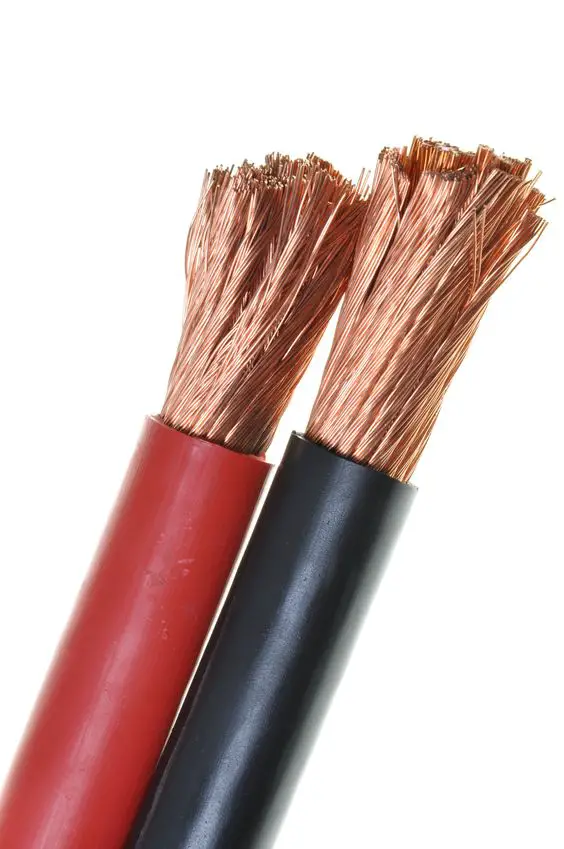
This can all be done using DALI, which does this by adding an extra 2 signal wires to each luminaire, giving them the ability to receive signals between 0-10V DC.
This however also means that in order for this to work the luminaires also need to have an input for the DALI signals. This requires the fixture to be DALI compatible. A DALI-compatible fixture will have the DALI logo on it somewhere to mark its compatibility.
This is however not too hard to find these days since DALI has become increasingly more popular in the light-controlling space in the last 10 years.
Motion Sensors
One rather common component of modern lighting control systems is the motion sensor. The main reason for having a motion sensor is to detect when there are no people present in a given area.
This allows for the ability to automatically turn the lighting off after a long enough time of human absence. The most standardized timing for this is to have the lighting turn off after 15 minutes. That said, with most detectors, this time can be changed into whatever you like/whatever works best for the area in question.
However, in more recent times it has become standardized to only allow the motion detectors to turn the lighting off instead of turning it both on and off. This is for a few reasons.
In areas with only one entrance such as a closed office room or a conference room, it can oftentimes be seen as annoying. It is usually seen as a better user experience when you have to turn the lighting on manually but have it turn off either by a manual switch or automatically.
Another reason for this is the fact that there are scenarios where the motion sensor will light up an area when it is not necessary.
One example of this is if someone forgets an item in a specific room and they enter the room simply to grab the item and then leave. This will cause the lighting to turn on even though it isn’t necessary and unless they also turn it off manually the room will stay lit for the entire 15-minute absence period.
In a practical sense, this would work simply by having a regular light switch with the addition of a small spring connected to the motion sensor.
This spring makes it so that every time you press the button it springs back into its position, meaning that instead of breaking the circuit we are now able to send “signals” of what state we wish the lighting to be in.
One common gripe users have with motion sensors is the fact that they will turn the lighting off even though there is someone sitting still there. This combined with using the solution of only allowing motion sensors to turn lighting off would become very frustrating.
This is why instead of using motion detectors/sensors we make use of presence detectors/sensors. These sensors will not only pay attention to large body movements but also smaller ones such as typing on a keyboard, looking around and even breathing.
This way they can be used without much frustration as they will detect your presence whether or not you’re moving around the area.
When presence detectors are used we can expect energy usage to drop by around 18% (0,82 multiple) according to the European Standard EN 15193-1 which is the standard that the LENI number is based on.
The 18% however take it that the lighting fully turns off when sufficient absence has been reached. In certain applications, it is decided that instead of turning the lighting off it will only dim down to around 20-30% and then go up again once it is manually turned on again. This principle creates an energy saving of around 10% (0,9 multiple) instead of 18%.
This can however be altered in whatever way the workplace desires. It is a very versatile system with a lot of possible functionalities, making it possible to program a lighting control system that fits the specific needs and desires of the current users.
Daylight Savings
Daylight savings is another large but somewhat overlooked opportunity to save energy. The main concept of daylight savings is to make use of the natural daylight that enters the office windows to save energy on artificial lighting.
In a practical sense, daylight savings is created by sensing the infall of daylight with some sort of light sensor and then based on that information dimming the lighting down or completely turning it off since the natural daylight is compensating for the installed lighting.
Using this concept to its fullest capacity allows us to save an additional 10% of energy.
This is possible by selecting which light level (in lux) we wish the area to have in the sensor and then programming the luminaires to work together with the daylight sensor to constantly keep the light at the desired level.
However, there is a risk in using this concept because it can in some cases create a bad user experience. Visually speaking we humans like it when things are even and smooth but this principle can create situations where the lighting might feel uneven.
For example, you might have a wide corridor where only one side has windows and there are two rows of downlights in the ceiling.
In a situation like this, it is possible that the row of downlights closest to the windows will dim down considerably whereas the ones further away might not dim at all, which will cause the lighting in the ceiling to appear uneven to the user.
Even though the actual lighting on the floor will be completely even and have a reduced amount of artificial light thanks to the incoming daylight it might still not be the best visual experience.
Another thing that can happen with a system like this is that it can cause unnecessary/annoying dimming. For example, the sun might continuously go back and forth behind clouds, which will cause the light level to automatically shift up or down depending on how dark/bright it gets.
This can be perceived as annoying if it happens too often and in most scenarios, there is no good way of manually taking control of the lighting again.
All things considered, this can be a hit or miss depending on the application it is intended for, but if all factors point towards this idea being good then it should absolutely be used considering the 10% decrease in energy usage. This simply varies from building to building.
Wireless Controlling
In relation to the energy savings made with the principles above, there are some other smart functionalities that can also end up saving energy, one of them being wireless controlling.
This refers to the ability to be able to toggle the lighting physically but without the need for a wire to do so, not to be confused with remote controlling that would normally be done in a smart home solution.
This type of technology is something that German building automation systems company Enocean has taken advantage of quite well.
Their technology involves several ways of lowering energy costs in various ways in which one of these ways comes in the form of a physical light switch that is neither connected to the electrical system at all nor does not contain any sort of battery.
Instead, they generate enough power to send a signal by the energy generated from pushing the switch. This signal gets sent to a receiving unit which then controls lighting based on the signal it receives.
That causes this system to be extremely energy efficient, however, it has not been tested extensively enough to pull conclusive data on how much energy it actually saves. This technology is also patented by Enocean.
Summary
The best overall tip for achieving an energy-efficient lighting system within an office space is to simply make use of today’s technology as much as possible without sacrificing any human comfort.
In a lot of real-life scenarios, it is possible to cut down the current energy cost for lighting by more than 50% if the correct measures are applied.
That being said there is no universal answer on how to minimize energy usage since different offices will have different requirements and wishes for their lighting system.

